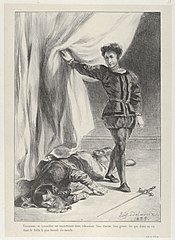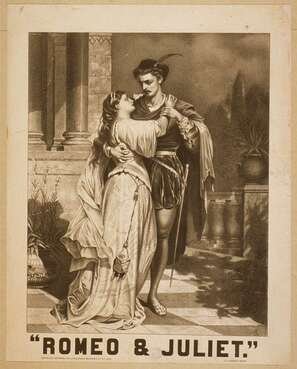Shakespeare uses special writing tricks that make his language in “Hamlet” more beautiful and deep. These tricks also help him express the complicated feelings and ideas in the story.
The following are important literary devices in Hamlet that help convey the complex emotions and themes of “Hamlet”.

Literary Devices in Hamlet
Metaphor
Example: “Frailty, thy name is woman!” – Act 1, Scene 2
Literary Device: Metaphor – Hamlet uses this metaphor to express his disillusionment with his mother’s quick marriage after his father’s death.
Soliloquy
Example: “To be, or not to be: that is the question…” – Act 3, Scene 1
Literary Device: Soliloquy – Hamlet’s famous contemplation on life and death is an introspective monologue, speaking his thoughts aloud to the audience.
Daily Test - Attempt Now
Irony
Example: “I am but mad north-north-west: when the wind is southerly, I know a hawk from a handsaw.” – Act 2, Scene 2
Literary Device: Irony – Hamlet ironically states that he’s only mad occasionally, suggesting he’s aware of his ‘madness,’ yet this knowledge is questioned throughout the play.
Allusion
Example: “Hyperion to a satyr…” – Act 1, Scene 2
Literary Device: Allusion – Hamlet compares his deceased father, King Hamlet, to the mythical figure of Hyperion, emphasizing his father’s greatness.
Foreshadowing
Example: The appearance of the ghost of King Hamlet
Literary Device: Foreshadowing – The ghost’s appearance hints at the troubles that will befall the kingdom and sets in motion the events of the play.
Symbolism
Example: Yorick’s Skull
Literary Device: Symbolism – The skull represents mortality and the inevitability of death, invoking Hamlet’s contemplation about the brevity of life.
Pun
Example: “Not so, my lord; I am too much in the sun.” – Act 1, Scene 2
Literary Device: Pun – The wordplay between “sun” (son) and “sun” (sunlight) in this conversation between Hamlet and Claudius carries a dual meaning.
Dramatic Irony
Example: Claudius’s reaction during the play within the play (The Murder of Gonzago)
Literary Device: Dramatic Irony – The audience knows the play mirrors the actual murder of King Hamlet, while Claudius, the murderer, reacts uneasily, unaware that it mirrors his crime.
Also, Read

Literary Devices in Macbeth

Literary Devices in Romeo and Juliet

